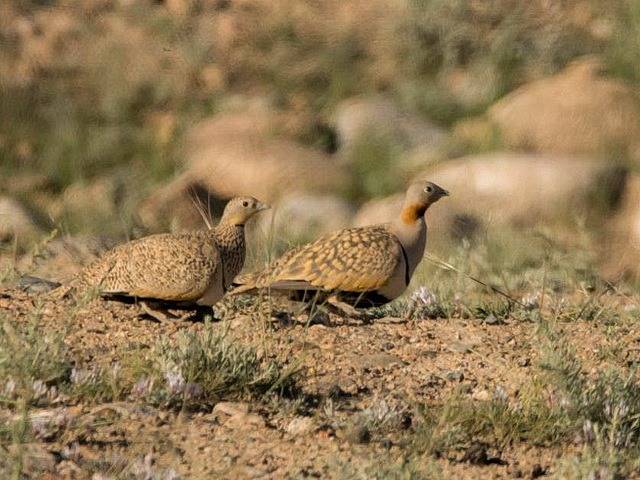
Common, in places rare breeding migrant. Inhabits the flat and slightly hilly clay sagebrush deserts, prefers the crushed stone or pebbly areas; the sandy sagebrush-grass deserts; and saline soil deserts; with fresh or salty water not far as 60-80 km. In such habitats lives in mountain broad valleys up to 1400-1800 m. Appears in end of February to mid-April, in pairs or small flocks of up to 20-30 birds. Breeds in separate pairs at distance at least 150-200 m one from another. Nest is the shallow recession without lining. Clutch of 3, rare 2 eggs is laid in end of April to mid-August. Both parents excavate the nesting recession, incubate clutch (female at day, male at night) and than care for offsprings. Regularly flight to watering-place; at nearest water can be observed from late morning to evening. Flying juveniles recorded from mid-July, young birds begin to fly to watering-places with the not full-grown outer primaries. Rears two broods per season. The brood of feathered but not flying juveniles was recorded 10 October 1978. SInce a large number of nests (up to 92%) loss because of predation, the re-nesting is very common. As soon as breeding is finished birds join in large flocks up to several hundred individuals and disperse quite widely. Autumn migration pass in September – October mostly, odd birds linger up to mid-November.
"Птицы Казахстана" том 2. "Наука". Алма-Ата, 1962. Э.И.Гаврилов. "Фауна и распространение птиц Казахстана". Алматы, 1999. Gavrilov E. I., Gavrilov A. E. "The Birds of Kazakhstan". Almaty, 2005.